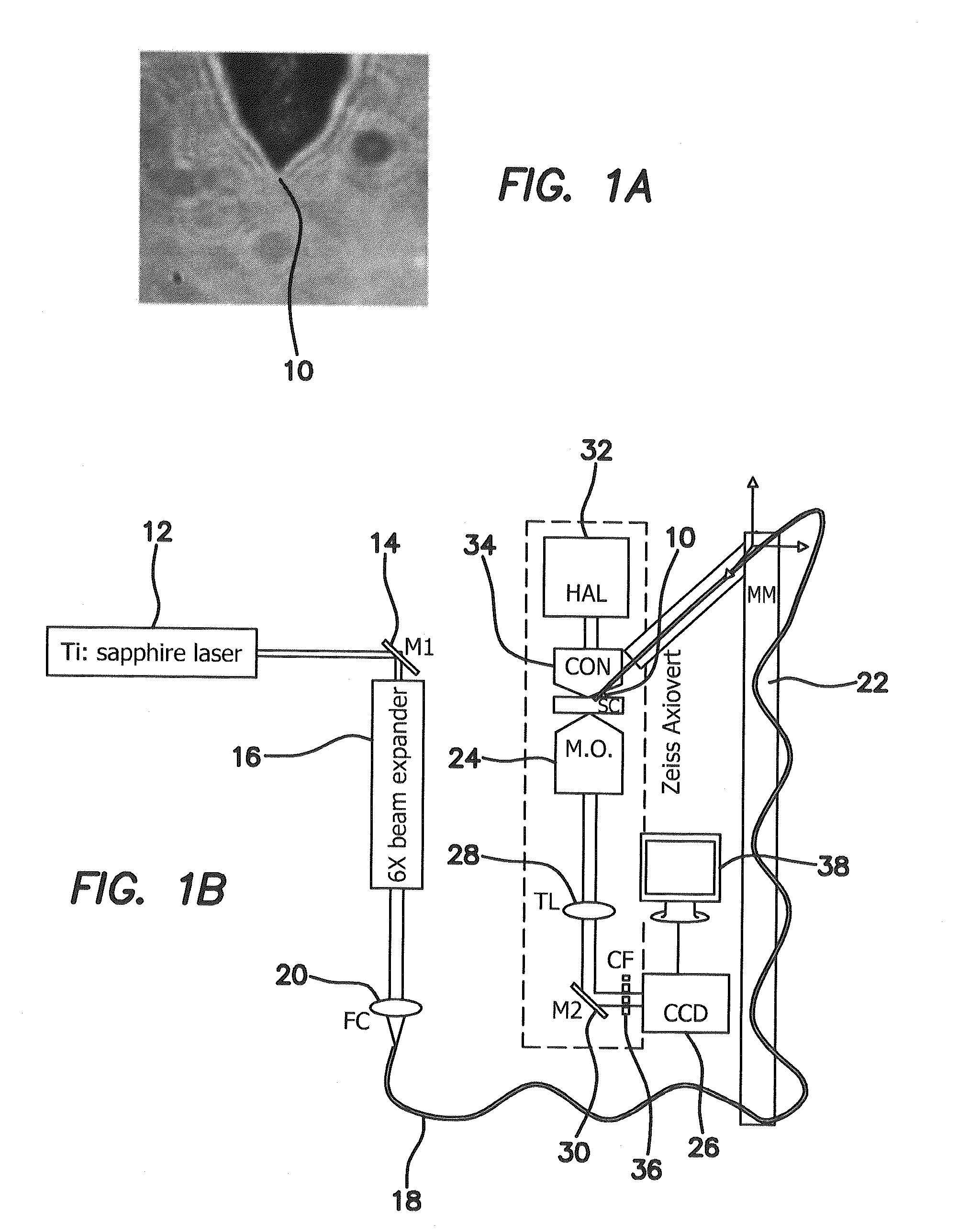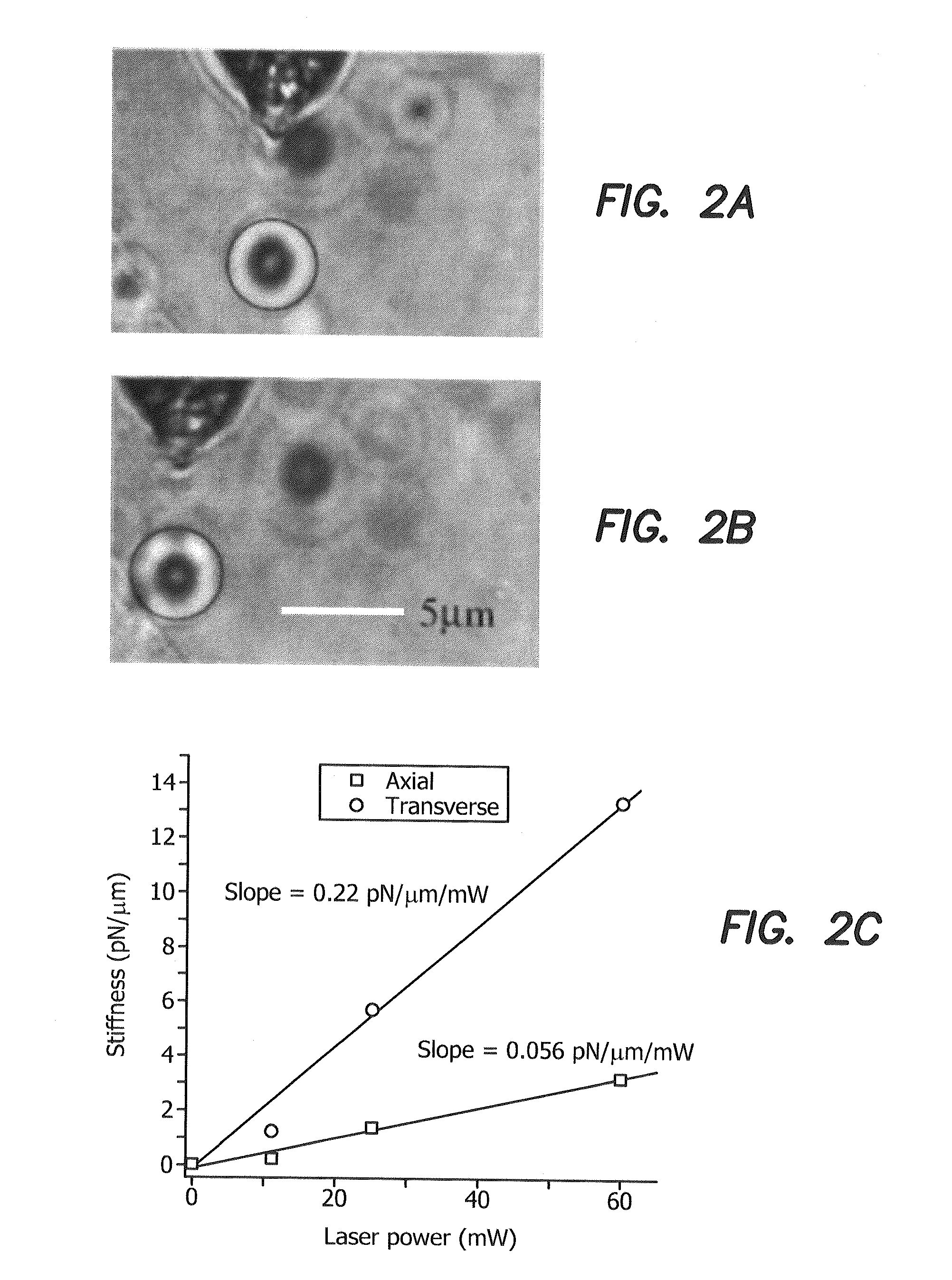Apparatus and method for micromanipulation of microscale objects using laser light delivered through a single optical fiber and axicon lens
a technology of laser light and micro-objects, applied in the field of single-fiber optical tweezers, can solve the problems of reducing requiring large processing time for groups of cells, and complex control of the scanning beam by computer, so as to reduce the throughput of the laser microbeam system, and achieve high throughput. the effect of large processing tim
- Summary
- Abstract
- Description
- Claims
- Application Information
AI Technical Summary
Benefits of technology
Problems solved by technology
Method used
Image
Examples
Embodiment Construction
[0033]The short working distance of microscope objectives has severely restricted the application of optical micromanipulation techniques at larger depths. In the illustrated embodiment we show the first use of fiber-optic tweezers toward controlled guidance of neuronal growth cones and stretching of neurons. Further, by mode locking, the fiber-optic tweezers beam was converted to fiber-optic scissors, enabling dissection of neuronal processes and thus allowing study of the subsequent response of neurons to localized injury. At high average powers, lysis of a three dimensionally trapped cell was accomplished.
[0034]In the illustrated embodiment we demonstrate the use of a single fiber-optic axicon device for organization of microscopic objects using longitudinal optical binding. Further, by manipulating the shape of the fiber tip 10, part of the emanating light was made to undergo total internal reflection in the conical tip region, enabling near-field trapping. Near field trapping r...
PUM
 Login to View More
Login to View More Abstract
Description
Claims
Application Information
 Login to View More
Login to View More - R&D
- Intellectual Property
- Life Sciences
- Materials
- Tech Scout
- Unparalleled Data Quality
- Higher Quality Content
- 60% Fewer Hallucinations
Browse by: Latest US Patents, China's latest patents, Technical Efficacy Thesaurus, Application Domain, Technology Topic, Popular Technical Reports.
© 2025 PatSnap. All rights reserved.Legal|Privacy policy|Modern Slavery Act Transparency Statement|Sitemap|About US| Contact US: help@patsnap.com



